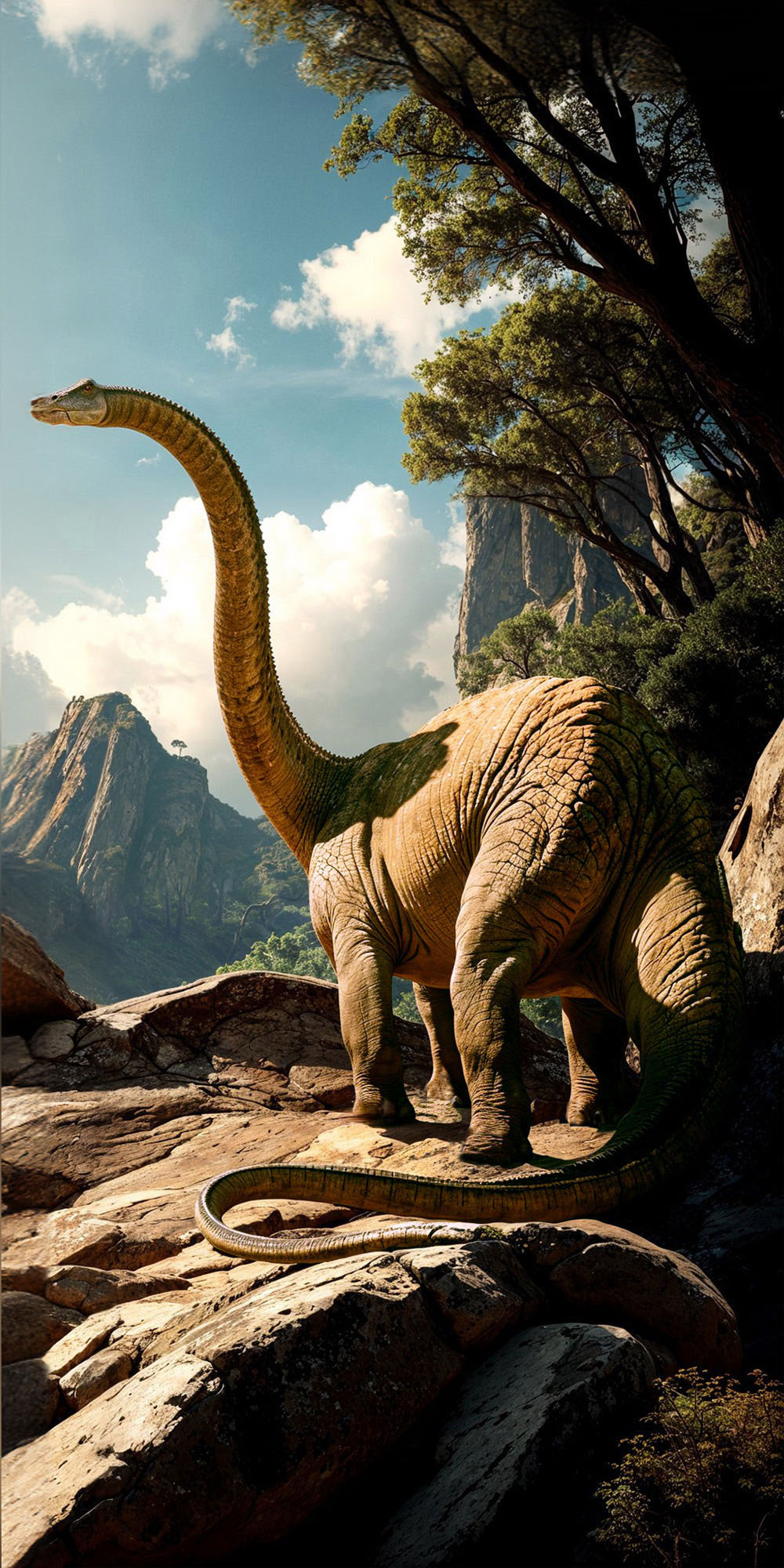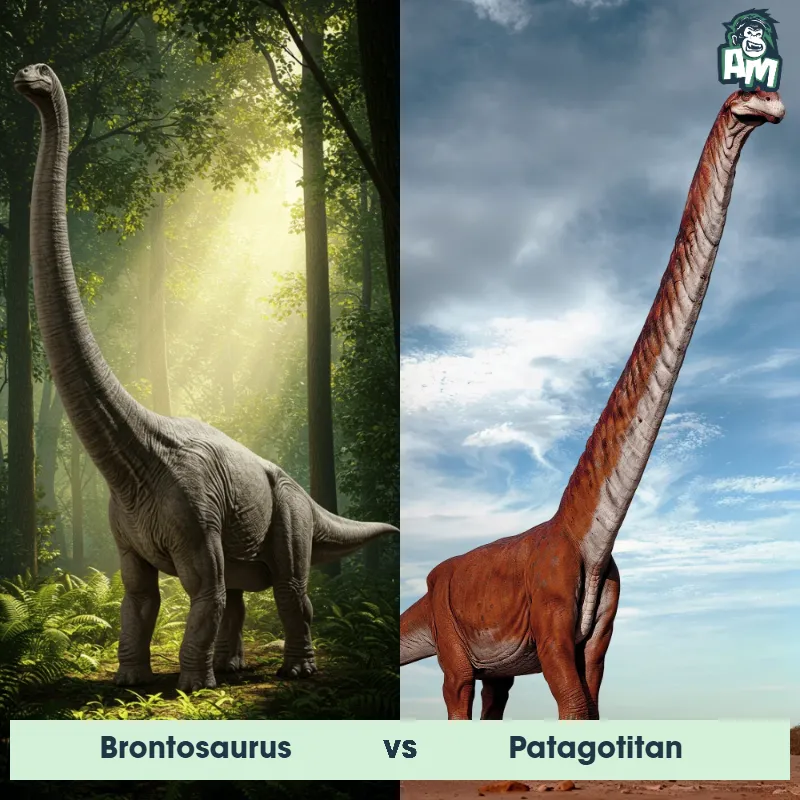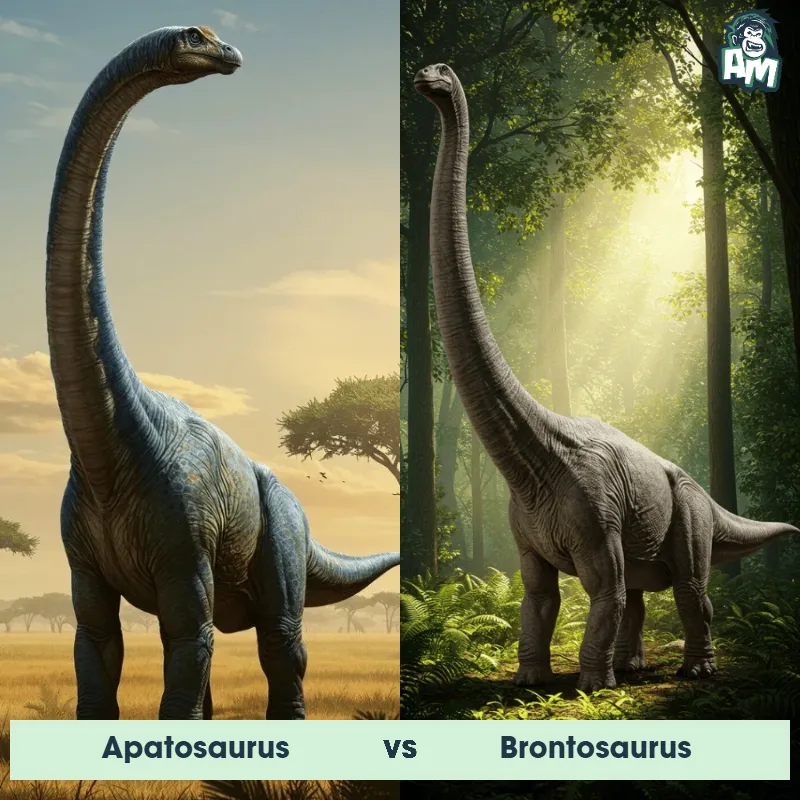The Brontosaurus
The Brontosaurus, also known as the “thunder lizard,” was a herbivorous dinosaur that roamed the Earth during the Late Jurassic period. It had a long neck and tail, as well as a massive body supported by four sturdy legs. Brontosaurus had nostrils on top of its head, indicating it spent most of its time in water, using its long neck to reach plants along riverbanks.

| Brontosaurus | |
|---|---|
| Size | Up to 75 feet (22.86 meters) in length |
| Weight | Over 30 tons (27,216 kilograms) |
| Speed | 15-20 mph (24-32 km/h) |
| Key Strength | Long tail for defense |
| Biggest Weakness | Not very agile |
| Scientific Name | Brontosaurus |
| Family | Diplodocidae |
| Habitat | Terrestrial |
| Geography | North America |
| Diet | Herbivore |
| Lifespan | 50 years - 100 years |

The Brontosaurus
The Brontosaurus, also known as the “thunder lizard,” was a herbivorous dinosaur that roamed the Earth during the Late Jurassic period. It had a long neck and tail, as well as a massive body supported by four sturdy legs. Brontosaurus had nostrils on top of its head, indicating it spent most of its time in water, using its long neck to reach plants along riverbanks.
Fun Fact: Brontosaurus was one of the largest land animals to have ever existed, with some individuals reaching up to 70 feet in length and weighing as much as 15 tons.
| Brontosaurus | |
|---|---|
| Size | Up to 75 feet (22.86 meters) in length |
| Weight | Over 30 tons (27,216 kilograms) |
| Speed | 15-20 mph (24-32 km/h) |
| Key Strength | Long tail for defense |
| Biggest Weakness | Not very agile |
| Scientific Name | Brontosaurus |
| Family | Diplodocidae |
| Habitat | Terrestrial |
| Geography | North America |
| Diet | Herbivore |
| Lifespan | 50 years - 100 years |
Brontosaurus Matchups
We use AI to simulate matchups between the Brontosaurus and other animals. Our simulation considers size, strength, and natural predatory behaviors to determine the most likely outcome.

Can't find the Matchup you want?
Create Your Own MatchupBrontosaurus: Diet, Predators, Aggression, and Defensive Behaviors
What did Brontosaurus eat?
Brontosaurus were herbivores, meaning they primarily ate plants. They would have consumed a large amount of vegetation such as leaves, ferns, and other plant material to sustain their massive size.
Did Brontosaurus have any predators?
Due to their enormous size and strength, Brontosaurus likely did not have many predators. However, younger or weaker individuals may have been susceptible to large carnivorous dinosaurs such as Allosaurus.
Were Brontosaurus aggressive?
Brontosaurus are believed to have been relatively peaceful creatures that mainly focused on finding food and caring for their young. They are not thought to have been inherently aggressive towards other creatures.
Did Brontosaurus fight?
Brontosaurus were not known to be aggressive towards each other. They likely did not engage in physical fights, as their size and strength would have been enough to establish dominance without the need for combat.
How did Brontosaurus defend themselves?
Brontosaurus likely relied on their massive size and strength as their main defense mechanism. Their long necks and tails could have been used to ward off potential threats by either intimidating predators or delivering powerful strikes if necessary.
What was the biggest weakness of Brontosaurus in a fight?
Despite their size and strength, Brontosaurus' slow movement and limited mobility may have been their biggest weakness in a fight. Their sheer size could make them vulnerable to fast and agile predators that could outmaneuver them.
Fun Fact: Despite its massive size, Brontosaurus likely had a relatively small brain compared to its body size, possibly relying more on instinctual behaviors than complex problem-solving skills.
Fun Fact: The discovery of Brontosaurus caused both excitement and controversy in the scientific community, as many believed it was the same genus as Apatosaurus until recent studies determined they were, in fact, separate species.












